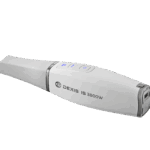In a study published in the journal Angle Orthodontist, researchers in Germany examined whether cervical headgear treatment necessarily leads to a reduction of overbite. They also looked for differences in treatment results due to different growth patterns or the initial overbite. Initial and intermediary casts of 247 patients who had been treated exclusively with headgear were analyzed for changes in the occlusal relationship of the first molars and overbite. Orthodontic treatment consisted of the application of cervical headgear with nonangulated external arms applied at a force of 3.5 to 4.0 N.
Only patients showing dental changes of occlusal relationship of 4 mm or less during at least a 6-month treatment duration were selected. Growth patterns were identified by the y-axis values measured on lateral cephalograms obtained at study entry. Six groups were formed on the basis of these growth patterns. Headgear treatment induced bite deepening in patients with vertical growth patterns and bite opening in patients with horizontal growth patterns. Further subdivision based on initial overbite revealed bite deepening in patients with small initial overbite and bite opening in patients with large initial overbite. These differences were statistically significant (p <.05). Only minor changes were observed in patients with an initial overbite of 3 to 4 mm. Overbite reductions were not dependent on the growth pattern. “Orthodontists should expect bite opening in deep-bite situations and bite deepening in open-bite situations,” wrote A. Godt and colleagues from the University of Tubingen Department of Orthodontics. The researchers concluded, “However, initial overbite situations of 3 to 4 mm should not be expected to change in a significant way.” The complete article is available here.






